Guatemala – Antigua
We have a thing for beautiful and well-preserved old colonial towns. The world does too I guess, given that Antigua was designated as a UNESCO World Heritage Site in 1979. We were only able to find a place to stay in Antigua for the first 9 days of our April visit to Guatemala. We didn’t know why we had such a hard time, but then learned that Antigua is the place to be in Guatemala during Semana Santa (the week preceding Easter), and the whole town was booked out for that week. Later, after we saw the show Antigua put on even before Semana Santa proper, we felt lucky to have found a place at all during Lent.
Antigua was established as the first Spanish capital of Guatemala in 1543, and remained so until 1776, three years after an earthquake all but demolished the city. It is a beautiful spot, surrounded by volcanoes…and vulnerable to earthquakes. We saw the ruins of several old churches and convents, done in by those earthquakes, and understood why the Spanish moved the capital to Guatemala City in 1776.
Purple pennants, flags, and dried flowers abound throughout the city. Folks, indeed whole neighborhoods, seemed to organize weekly to labor on the many alfombras (Spanish for “rug”). These alfrombras (think an organic “rug” designed and created on the streets with various leaves and grains and colored sawdust and flowers and so on) were stunning. The groups, perhaps family groups, appear to work on these decorations all through the night before the next scheduled procession. At which point these beautiful and hard works are trammeled upon by the procession and then quickly swept up after the procession moves on. Incredible! The processions themselves seem to differ by the day, at times led by Roman soldier costumes, at other times the entire troup are donned in purple robes with pointy hats, and always they are carrying some form of Jesus, be it in a casket or carrying the cross, and usually followed (at least by my religiously unlearned eyes) by a statue of Mary. Upwards of a dozen or even more people carry these “floats” as pallbearers, with women only seemingly carrying the Mary float where it appeared men carried the floats of the Jesus. There is a band that is part of the procession playing solemn, dirge-like music. Then, either the next evening or perhaps a few days later the whole thing starts again. Spectacular!
Denise has this thing with textiles, and will often try dragging me through some market or another to investigate the local variances therein. She found out about a class that teaches the classic method of making the local textiles with what is called a backstrap loom. She took the four-hour class, and came home beaming with a small but colorful Guatemalan-looking weaving, determined to finally buy a loom at home to have more weaving fun.
The next class we partnered up so to speak and took a cooking class together where we learned how to make a traditional pepian, best described as a thin stew with chicken and some vegetables. The flavor iss akin to a Mexican mole, though less dark and far fewer ingredients. We first roasted the vegetables and spices that would go into the pepian on a ceramic comal pan, over an open wood fire (that was emitting a lot of eye-burning smoke). We then hand ground these ingredients, slowly adding in the remaining ingredients, using a traditional metate (a slanted table-like volcanic grinding stone just like you see in museums) and a mano (a grinding stone that is shaped like a big cob of corn that you hold and use to grind). We both tried it, and I proactively got ahead of any crazy ideas by announcing that we didn’t need one of these at home, we’d make due with a food processor.
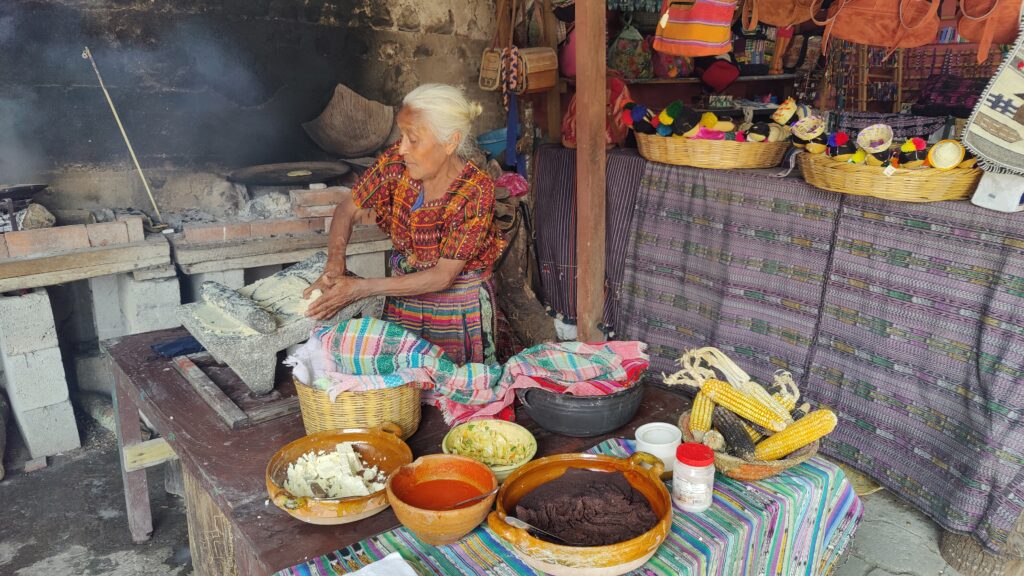
One of the women who taught the class. She’s grinding corn dough, and the comal we used to roast is to her right.
The meal was truly delicious, and even though the women teachers told us that hand ground is always the best, my spouse nodding along knowingly, I’m standing firm. Was Antigua the most beautiful of the several Spanish colonial cities we visited on this trip? Yes, I’d say it was. If you’re going to pick just one Spanish colonial city to visit in Central America, I’d recommend you pick Antigua, especially if you’d be there on a weekend during Lent. It’s easy to visit as it’s about one hour from the Guatemala City airport, but a world away.
Categories: Uncategorized
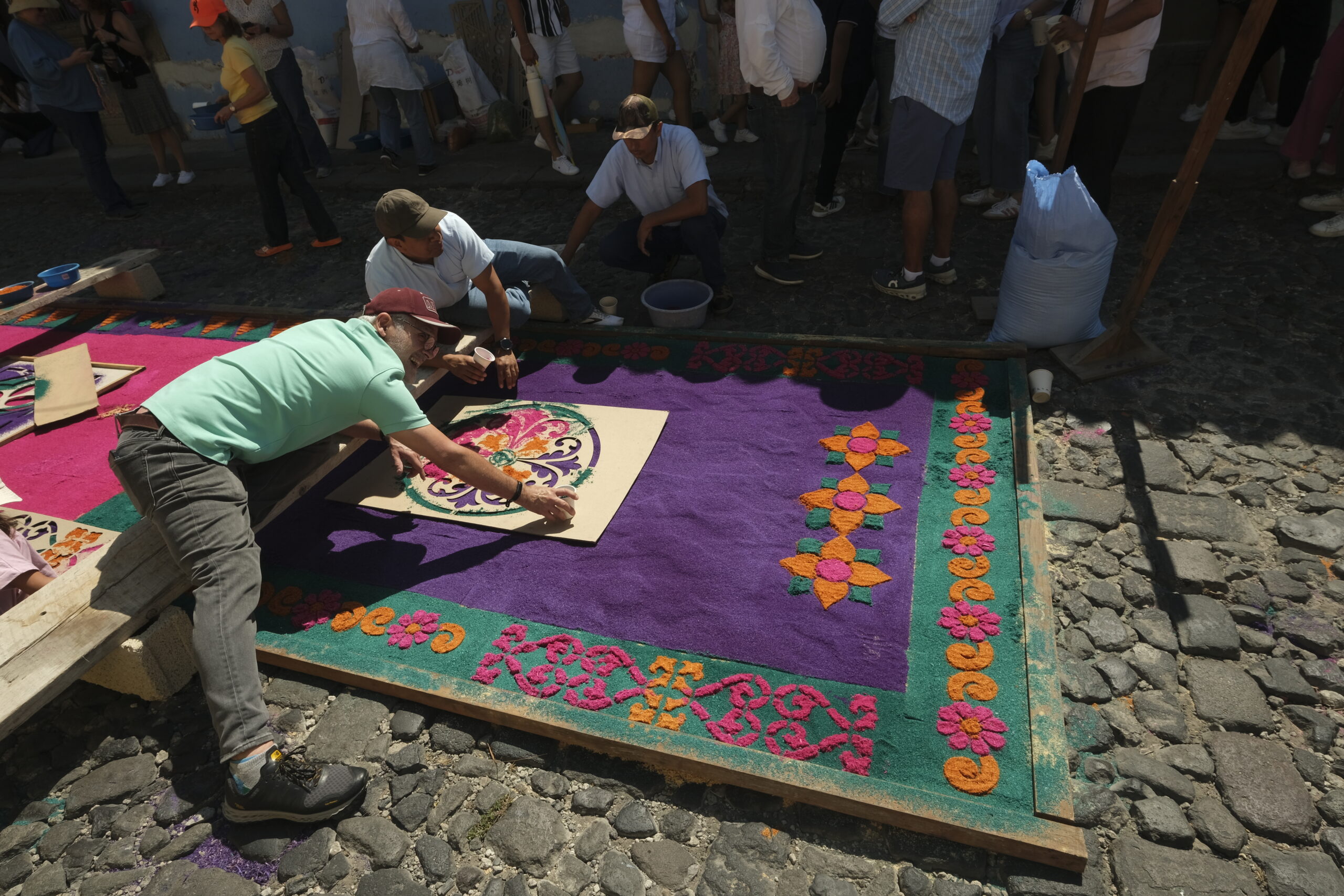
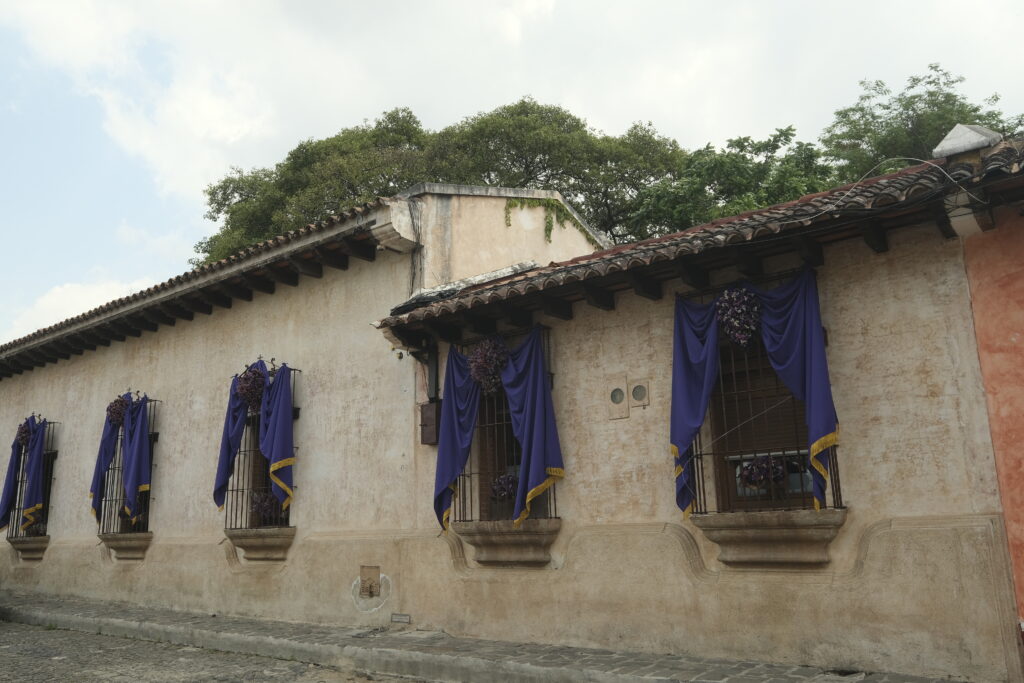
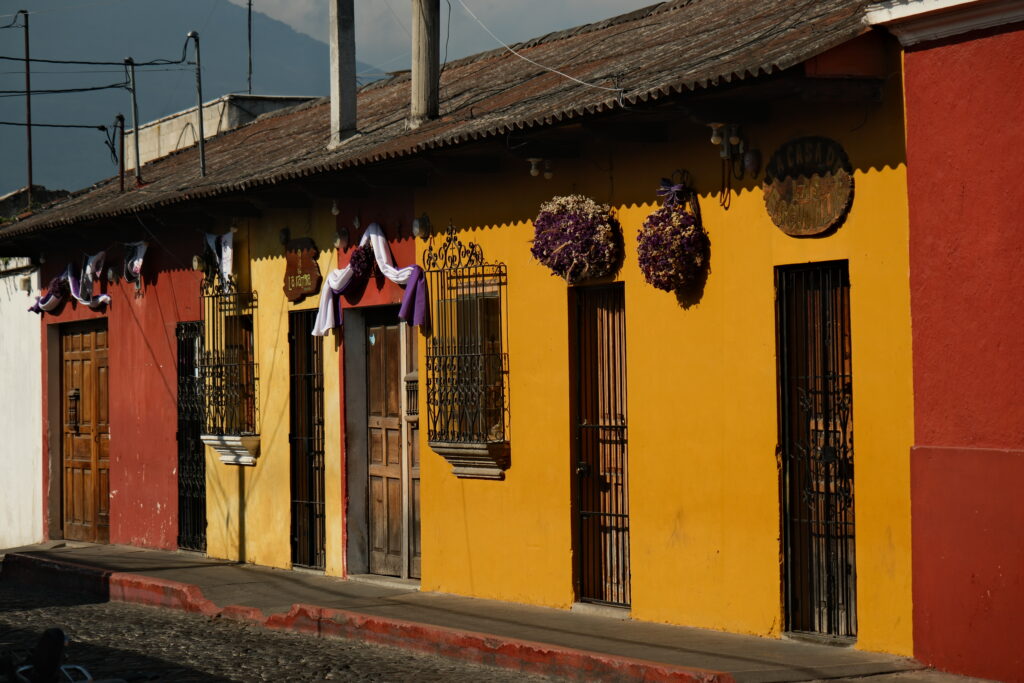
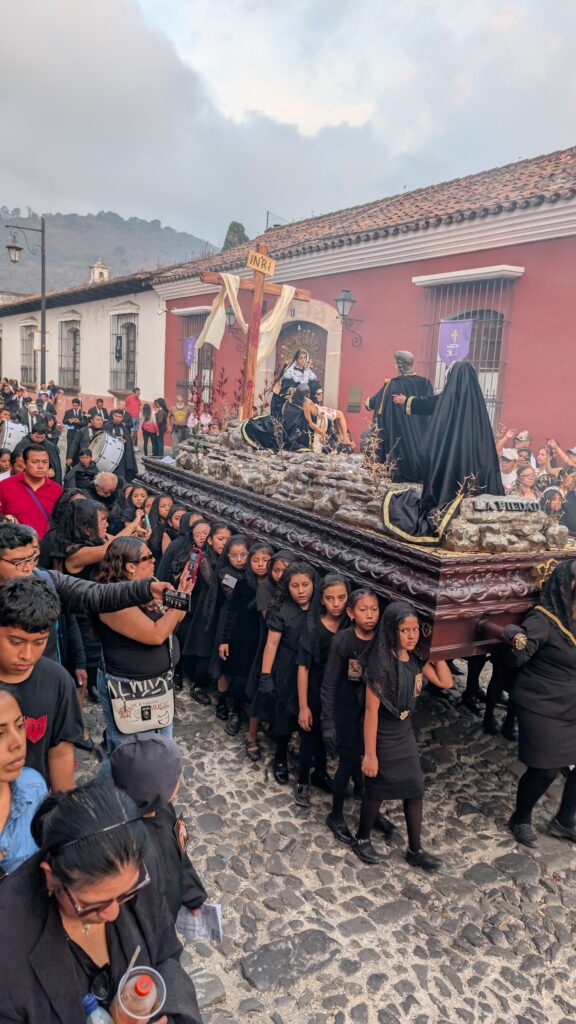
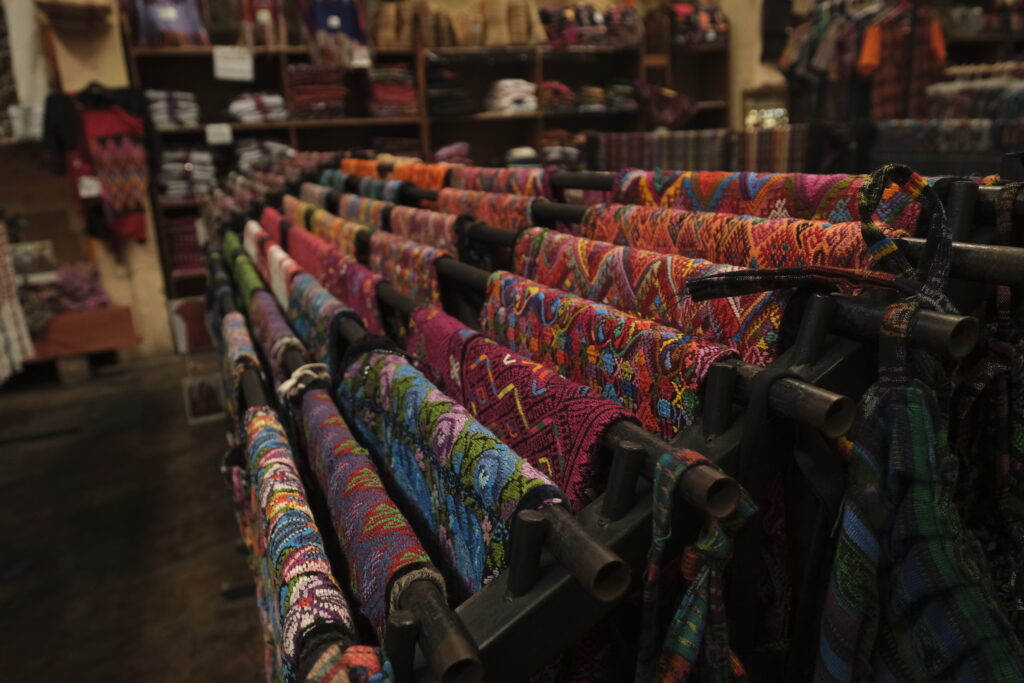
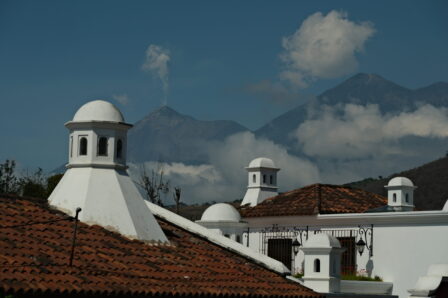
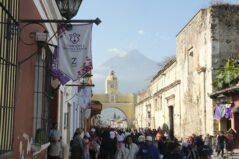
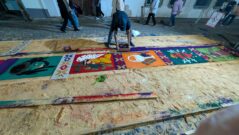
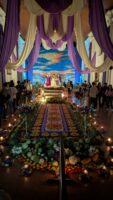
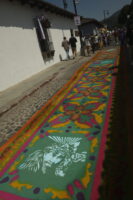
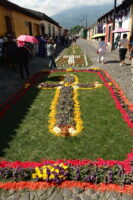
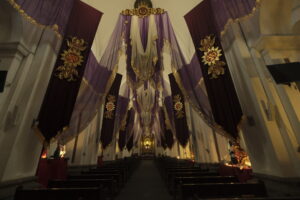
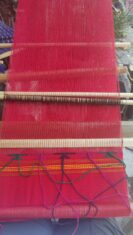
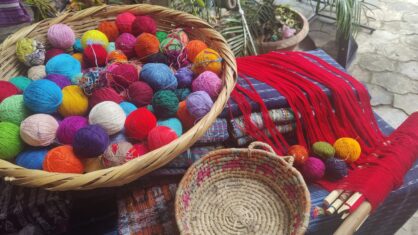
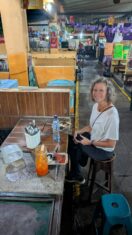
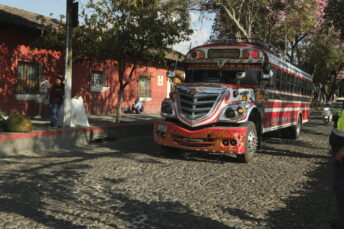
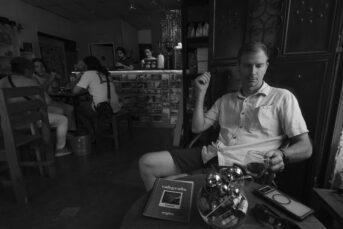
Not sure how you guys are getting any work done, but maybe that doesn’t matter.
Thanks again for another update on your amazing trip!! Being in Guatemala during Lent had to be so awesome, seeing the parades and the city itself! Denise, you will have a new hobby when you retire…getting that loom and weaving textiles!!
I will!
Thanks for the update.
The video made it all so real, and I especially loved the rugs. Take care, Abby
Thank you! We did too, It was a really unique experience.